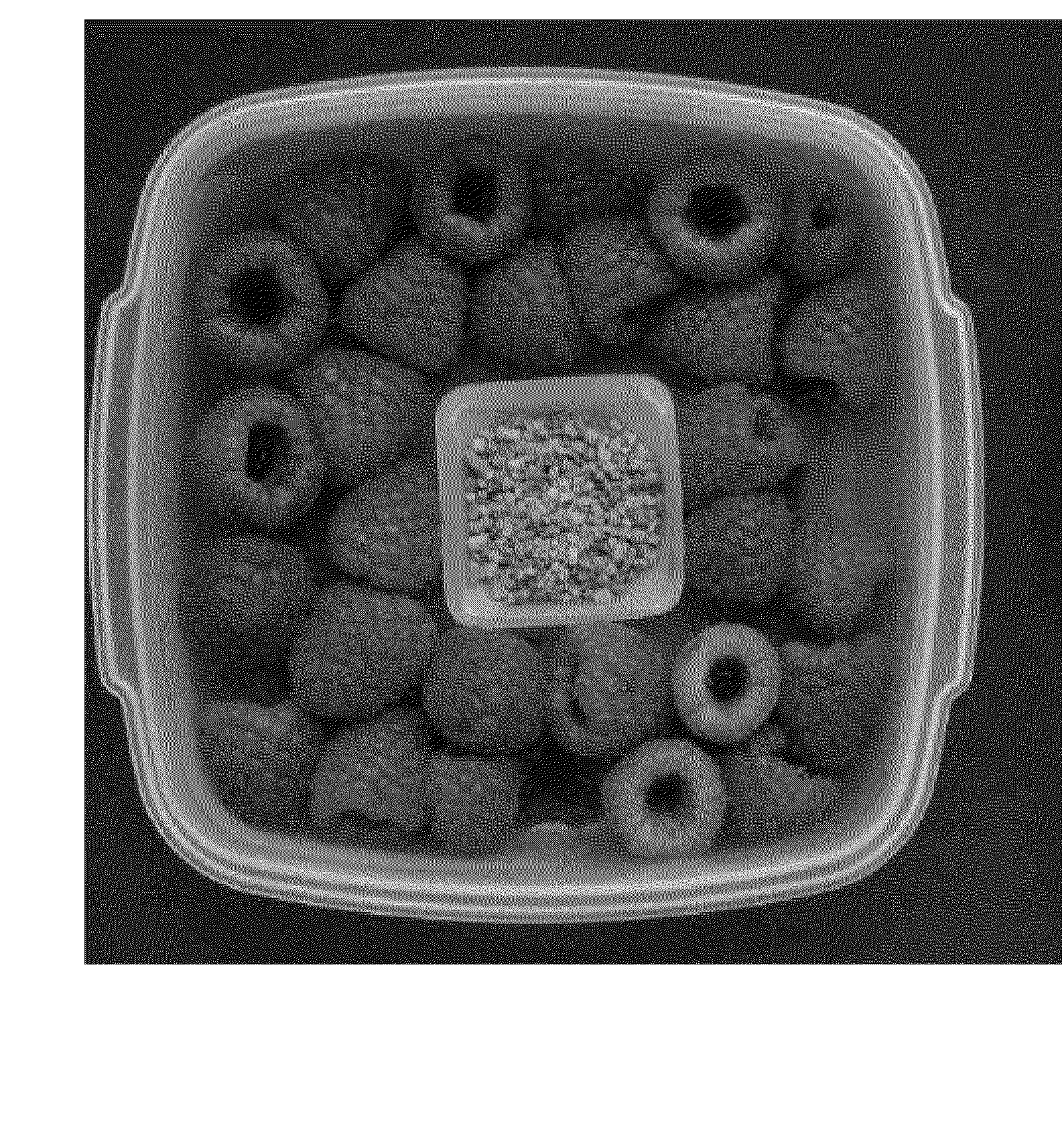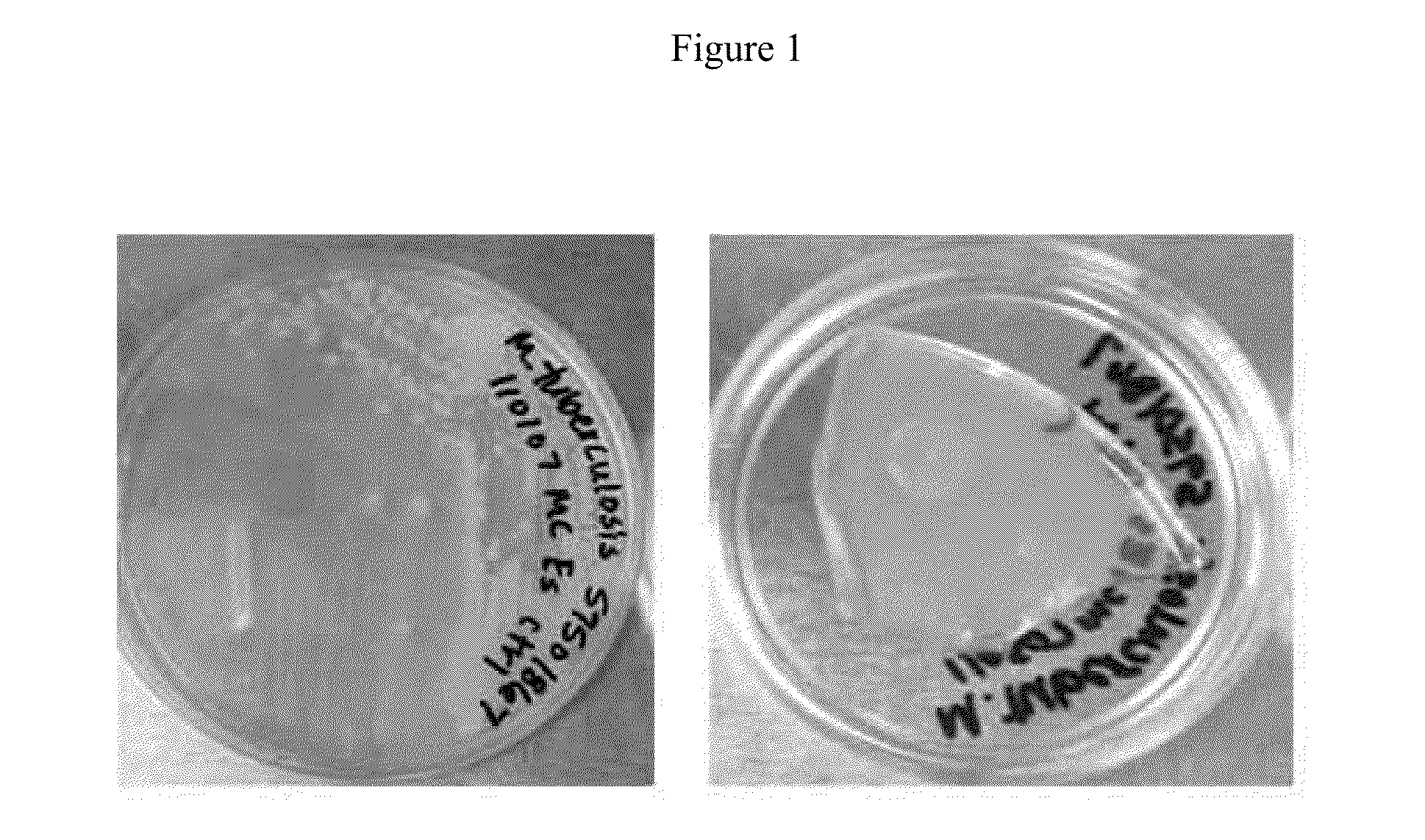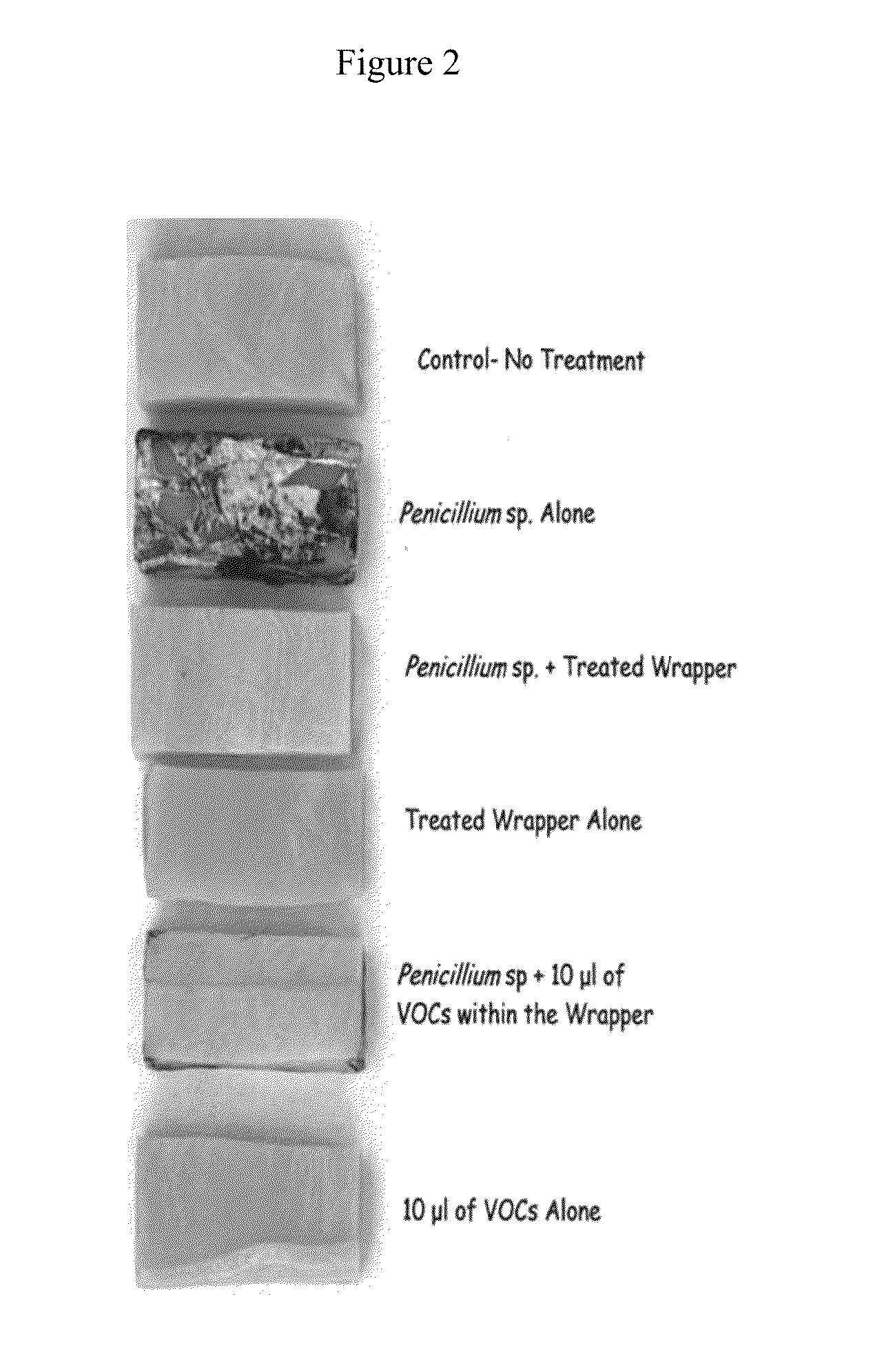Antimicrobial Compositions and related methods of use
a technology of compositions and antimicrobials, applied in the field of identification and development of biocides, can solve the problems of inability to meet the requirements of various end use applications, toxic or otherwise unhealthy, and the discontinuation of the use of methyl,
- Summary
- Abstract
- Description
- Claims
- Application Information
AI Technical Summary
Benefits of technology
Problems solved by technology
Method used
Image
Examples
example 1a
[0103]Fungal Isolation.
[0104]Several small stems of Ananas ananassoides were taken from a plant growing in the Bolivian Amazon in March of 2007. They were collected in a savanna region adjoining the rainforest at 12° 40′07″ 5 and 68° 41′58″ W and were immediately transported for analysis. Several small (2-5 inch) pieces from the stems were cut and placed into 70% ethanol for 30 seconds under a laminar flow hood. A pair of sterile tweezers was used to hold the stems separately in the flame to remove excess alcohol. Then small pieces of inner tissue (beneath the bark) were excised and placed onto potato dextrose agar (PDA) with an actively growing M. albus isolate 620 on one side of the plate having a center well removed from it. Effectively, this technique can be used to select for other isolates of Muscodor (Worapong et al., 2001a&b). During an incubation period of two weeks, the Petri plates were examined periodically for any fungal growth. Once hyphae were observed, the hyphal tip...
example 1b
[0105]Fungal Taxonomy.
[0106]Fungus in nature is associated with A. ananassoides and is a deuteromycete belonging to mycelia sterilia. Fungal colonies whitish on all media tested when left out of direct sunlight. Fungal colonies pinkish on all media tested when put into direct sunlight. Spores or other fruiting bodies were not observed under any conditions. Hyphae (0.6-2.7 μm) commonly growing by branching, sometimes forming perfect coils (ca. 40 μm) and having cauliflower like bodies (3.5-14 μm) associated with them. Hyphae, newly developing, grow in an undulating pattern when observed under all conditions with all of the media tested. Mycelium on PDA covers the plate in 3-4 weeks and produces a fruity odor.
[0107]Holotype:
[0108]Endophytic on A. ananassoides. Collections were made in the Bolivian Amazon in the Heath River area. The holotype comes from only one A. annisoides stem, collected in the Heath River country. A living culture is deposited as Muscodor crispans in the living Mo...
example 2a
[0113]Scanning Electron Microscopy.
[0114]Scanning electron microscopy was performed on the isolate of example 1 after procedures described by Castillo et al. (2005). Agar pieces and host plant pieces supporting fungal growth were placed in filter paper packets then placed in 2% gluteraldehyde in 0.1 M sodium cacodylate buffer (pH 7.2-7.4) with Triton X 100, a wetting agent, aspirated for 5 minutes and left overnight. The next day the pieces were washed six×15-minute changes in water buffer 1:1, followed by a 15-minute change in 10% ethanol, a 15-minute change in 30% ethanol, a 15-minutes change in 50% ethanol, five×15-minute changes in 70% ethanol, and were then left overnight or longer in 70% ethanol. They were then rinsed six times for 15 minutes in 95% and then three 15-minute changes in 100% ethanol, followed by three 15-minute changes in acetone. The microbial material was critically point dried, gold sputtercoated, and images were recorded with an XL30 ESEM FEG in the high vac...
PUM
| Property | Measurement | Unit |
|---|---|---|
| time | aaaaa | aaaaa |
| time | aaaaa | aaaaa |
| thickness | aaaaa | aaaaa |
Abstract
Description
Claims
Application Information
 Login to View More
Login to View More - R&D
- Intellectual Property
- Life Sciences
- Materials
- Tech Scout
- Unparalleled Data Quality
- Higher Quality Content
- 60% Fewer Hallucinations
Browse by: Latest US Patents, China's latest patents, Technical Efficacy Thesaurus, Application Domain, Technology Topic, Popular Technical Reports.
© 2025 PatSnap. All rights reserved.Legal|Privacy policy|Modern Slavery Act Transparency Statement|Sitemap|About US| Contact US: help@patsnap.com



